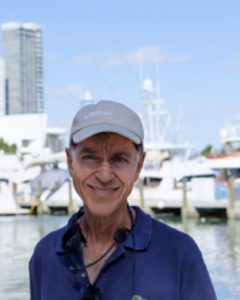|
Getting your Trinity Audio player ready...
|

As I am writing this article, the City of Miami is concluding an unprecedented week of celebrating its rich history through the prism of an ambitious 125th birthday observance. I was heavily involved in the city’s memorable centennial celebration in 1996, and never looked ahead at the prospect of a 125th. But here we are, and what a celebration it has been!
In our previous column, we examined the quickening pace of Miami’s development en route to its incorporation as a city on July 28, 1896. Businesses began opening in early 1896, housed in wood frame buildings along Avenue D, the city’s first street, which is today’s South Miami Avenue. Julia Tuttle’s Hotel Miami, though unfinished, opened to guests that spring. A few blocks northeast of the Hotel Miami, Flagler’s posh Royal Palm Hotel was beginning to rise.
On April 13, 1896, Henry M. Flagler’s long-awaited railroad entered Miami, a seminal event greeted, it was said, by hundreds in a community that counted a double-digit population just a year earlier. In early May, the Bank of Bay Biscayne, the settlement’s first bank, opened. Later that month, the Miami Metropolis, its first newspaper, began publishing. A weekly that appeared each Friday, the journal, despite its hyperbolic name, represented an important voice in the Magic City till its demise in 1988.
In its inaugural edition, the Metropolis noted that lots owned by the Brickells on the south bank of the Miami River had recently been placed on sale. The newspaper also complained that the community lacked a bridge spanning the river forcing people on the north bank of the narrow stream, desirous of picking up their mail at the Brickell trading post, to hail a ferry and pay a ten-cent toll to reach it.
Visitors and new residents continued to stream into Miami, already seen as a place of opportunity, a land to begin over again. Among the former was Captain T. H. Abbott, a resident of New Bern, North Carolina, who penned a missive to his family from the burgeoning community in early June 1896. Abbott informed them that “we arrived here last night (after earlier visiting Key West)…There has been a great change in this place since we were here three months ago, then there were only two houses and two families, now there are twelve hundred (1200) people here, a railroad, about 25 stores, two gospel tents, one large hotel nearly completed, several small ones, one floating hotel, besides several floating restaurants, a newspaper office, ice house and saw mill, and a legion of small traders of all kinds.
“Three months ago this area was a thick primeval forest, now it is all cleared up, laid out in streets and partially built, lots are increasing in value and soon will be held at fabulous prices. Mr. Flagler is building what will be one of the finest hotels in Florida (Royal Palm). It will probably be completed in time for the winter travel next year, it is located on the north side, within a few hundred yards of the site of historic old Fort Dallas, a part of which still remains and is the home of Mrs. Tuttle.” Abbott completed his incisive description of Miami by declaring it to be “by far the finest and most beautiful site I have seen on the Florida coast.”
At the time of Abbott’s visit, the Miami Metropolis, prodded perhaps by the Flagler forces, called for the incorporation of Miami as a city. The journal argued that incorporation was important to “frame and enforce such ordinances as are necessary.” Among the desired ordinances should be one enabling the new municipality to deal with a challenging sanitary situation, specifically “the removal of excrement and all kinds of disease-producing products at stated intervals.” Another ordinance would be necessary to ban “indecent bathing,” on the part of workers who bathed nude in the Miami River and Biscayne Bay.
In our next installment of this column, we will examine the incorporation of the City of Miami on July 28, 1896.
Paul S. George, Ph.D., serves as Resident Historian, HistoryMiami Museum. He conducts history tours throughout the county and even beyond for HistoryMiami. Additionally, he teaches classes in Miami/S. Florida and Florida history for the Museum. Dr. George has also led, since 2002, tours of Little Havana as part of Viernes Culturales, a monthly celebration, held every third Friday, of the culture and history of that quarter. The tours are open to all and are free!





